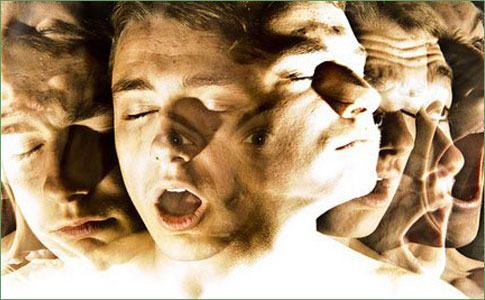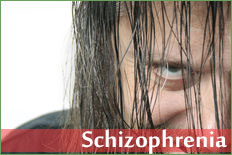Paraphilias and Paraphilia-Related Disorders
Introduction
Paraphilias are psychosexual disorders characterized by recurrent, intense sexual fantasies, urges, or behaviors involving atypical or unacceptable sexual content. They are the sexual equivalents of obsessions and compulsions, focusing on aspects of human sexuality that do not have the goal of mutual sexual arousal with a partner. The term "paraphilia" comes from the Greek for love (philia) that is "aside" (para) in the sense of being altered or modified, a deviation in the object of attraction. Paraphilia has replaced the older terms of sexual perversion or deviation.
Symptoms & Signs
Paraphilias and Paraphilia-Related Disorders
The paraphilias all involve "recurrent intense sexually arousing fantasies, sexual urges, or behaviors" that have been present for more than 6 months, according to DSM-IV criteria. These urges and fantasies are not the transitory or variant sexual scenarios imagined by the sexually adventurous. They do not change readily, are difficult to keep out of sexual consciousness, and have a power that at times makes it difficult to resist acting them out. Paraphilias are manifested in imagery, which may exist as a sexual fantasy or be associated with erection or orgasm in masturbation or other sexual behavior. The DSM-IV diagnostic criteria also state that the "fantasies, sexual urges, or behaviors cause significant distress or impairment." Solo masturbation for some affected individuals is hypersexual, to the extent that it occurs many times per day. Because acting out some paraphilias may involve illegal acts, many individuals with paraphilias are reluctant to acknowledge public acts or acts with a partner.
Paraphilias and Other Disorders
The paraphilias are named for the sexual content that is the primary focus of the sexual fantasy. There are over 40 named paraphilias (Money, 1999), although only the more common ones for which people seek psychiatric help are listed in DSM-IV. This content may be independent of sexual orientation. Although some paraphilias usually occur only in heterosexuals, for most a person may be heterosexual, homosexual, or bisexual. Some paraphilias are distinguished by a preoccupation with objects as essential for maximal sexual arousal, primarily items of clothing or materials, as in fetishism, or by wearing the clothing of the other sex, as in transvestic fetishism. Other paraphilias derive their excitement from the lack of a mutual relationship with the partner, for example, exhibitionism, voyeurism, or frotteurism (illicit sexual touching or rubbing). Sexual maso-chism and sadism focus on humiliation and suffering. In pedophilia the fantasized partners are prepubescent children. These paraphilias are discussed in detail in the following sections.
Some paraphilic fantasies are very elaborate and may involve content from several different general paraphilic themes. Thus, for example, sadistic pedophilia involves fantasies of the humiliation and suffering of prepubescent children. Paraphilias may be acted out through masturbation accompanied by the paraphilic fantasy, sometimes incorporating relevant props. Some paraphilias are acted out with partners. The paraphilic ritual provides indications of the underlying sexual fantasy, although the ritual may act out only some select portion of the fantasy. The paraphilia is diagnosed, insofar as possible, based on the elaborated fantasy, not just the behavior. Thus, a man who masturbates his exposed penis while watching unsuspecting children and having fantasies about sadistic acts with the children would be diagnosed with sadistic pedophilia (a sexual disorder not otherwise specified in DSM-IV), not with the separate diagnoses of voyeurism, exhibitionism, sadism, and pedophilia, unless these fantasies recurrently occurred independently of each other. Sometimes two or more independent paraphilias may exist in the same individual, with no overlap or shared content. Each of the independent paraphilias must have been independently and recurrently present in fantasies for at least 6 months to meet diagnostic requirements for two or more paraphilic diagnoses.
Schizophrenia
A common and serious mental disorder characterized by loss of contact with reality (psychosis), hallucinations (false perceptions), delusions (false beliefs), abnormal thinking
The content of common paraphilic fantasies may occur occasionally in the sexual imagery of individuals with generally conventional sexualities. Or an individual may engage in occasional behaviors or acts involving atypical sexual content. This behavior may be playful and experimental, particularly with a consenting partner. It may be regressed in situations of stress or associated with organic impairment. The criteria of recurrent and intense sexual urges, fantasies, or behaviors over at least 6 months must be met before a paraphilia can be diagnosed. For a patient with a paraphilia, the atypical sexual imagery is often necessary for sexual arousal, sometimes to the extent of being intrusive during conventional sexual activity. In some cases, particularly with aging and experience, the paraphilic fantasies may evoke more of a feeling of relief from tension or produce feelings of calm and comfort rather than sexual arousal.
Paraphilias are diagnosed almost exclusively in males, although they may also occur in females. Usually the onset is reported in the sexual fantasies of adolescence. Critical events or early indicators of paraphilic arousal may be reported as early as age 3-5. In other cases, the recognition of paraphilic interests is delayed into adulthood. Paraphilias may be associated with sexual dysfunction, since the sexual arousal is associated with a fantasy scenario rather than the partner. There is usually impairment in sexual or social relationships. Paraphilic imagery and behavior may seriously distract the individual from work and everyday activities. Paraphilic behavior may also be embarrassing or illegal if acted out with a nonconsenting partner.
Individuals with paraphilias may not report feeling distress and may justify their sexual interests as variant sexualities. Others feel shame or guilt about their sexual interests and can be depressed. Referral for treatment is usually a result of problems with partners or potential for legal charges.
Paraphilias and Paraphilia-Related Disorders
Epidemiology & Etiology
The incidence of paraphilias is not known but is believed to be low. The incidence of specific paraphilias varies in different societies and historical periods. Paraphilias have been identified mostly in men but also exist in women.
The cause of paraphilias is not known, however the content of many paraphilic fantasies seems to be associated with childhood experiences. Although the expression of paraphilic fantasies typically begins in adolescence, the disorder does not seem to be caused by adolescent or adult experiences except perhaps in rare cases of severe trauma.
Treatment
Paraphilias are generally chronic conditions that some individuals can learn to control. The treatment for the different paraphilias is similar, although some adjustments are made in association with the differing contents. Compulsive paraphilic acting out that poses a risk to others or is not well controlled may be treated in inpatient settings. Medications that reduce testosterone may be used to decrease the intensity of the sexual urges and facilitate self-control. Individual psychotherapy and group treatment can examine issues concerning the origin of the paraphilia and its effects on an individual's personality development and life-style. Cognitive and behavioral techniques are favored; psychodynamic approaches are not generally believed to be effective. Techniques for reducing inappropriate sexual arousal and controlling undesirable sexual behavior are developed. Patients attempt to increase socially acceptable heterosexual or homosexual sexual arousal and may participate in training to improve social skills and help develop relationships. Cognitive distortions are challenged, and understanding of societal and victims' points of view is enhanced. The patient must learn to identify and avoid risk situations. Relapse prevention planning is part of the therapeutic process, and patients may need to be maintained in long-term follow-up.


